
Climbing roses: the 10 best varieties
Reliable choices for the garden
Contents
Unlike shrub varieties, climbing roses produce long stems able to cling to a support thanks to their thorns. These varieties are ideal for climbing over an arbour, an arch, a pergola, or against a wall. They are perfect in romantic gardens, alongside other plants with soft hues, such as clematis, gypsophilas, nepeta, lavender, bellflowers, astrance… They differ from liana roses, which are more vigorous and much larger. Flowers of climbing roses are majestic and very delicate, and can be solitary or gathered in small clusters. Numerous varieties are available, distinguished by their flowers, single or double, and by their colours, which can be very soft and delicate, as with rose ‘New Dawn’, or much more intense, as with ‘Paul’s Scarlet Climber’. Discover the best climbing rose varieties, with their characteristics, to make the right choice!
Ghislaine de Féligonde rose
‘Ghislaine de Féligonde’ is an old rose that bears fragrant flowers, the colour varying from cream-white to orange. The flowers are double, forming pompon-like heads composed of a large number of petals. They measure 4 to 5 cm in diameter and are borne in clusters. Flowers are first yellow‑orange as they open, then fade, creating lovely colour variations on the same young plant! ‘Ghislaine de Féligonde’ can reach up to 3 metres in height and has glossy dark green foliage. It is a hybrid of Rosa multiflora, bred in 1916 by Eugène Turbat. In the garden, we recommend planting it in partial shade, which helps to show off its flowering. There is also a pink-flowered variety: ‘Pink Ghislaine de Féligonde’
Pierre de Ronsard rose
‘Pierre de Ronsard’ is a must-have rose! It bears large, very double flowers, made up of numerous, densely imbricate petals. The centre of the flower is a fairly deep pink while the outer petals are pale pink–white, creating a delicate colour gradient. It is ideal for creating a very romantic atmosphere! It is perpetual, flowering from June to October. It is fairly disease-resistant. This rose is a Meilland introduction and is sometimes found under the name ‘Eden Rose 85’. Its qualities earned it the World Favourite Rose award in 2006, a prize given by the World Federation of Rose Societies.
Discover other Climbing Roses
View all →Available in 2 sizes
Available in 1 sizes
Available in 4 sizes
Available in 2 sizes
Available in 3 sizes
Available in 3 sizes
Available in 2 sizes
Available in 2 sizes
Rose 'Madame Alfred Carrière'
‘Madame Alfred Carrière’ rose produces very pale pinkish-white flowers, borne in clusters. They measure about 10 cm in diameter and are pleasantly scented. It has almost continuous flowering from June until first frosts. It can flower even when planted in partial shade. It also has the advantage of bearing very few thorns! This is an old Noisette hybrid rose. Its qualities have earned it the Award of Garden Merit, an award given by the Royal Horticultural Society (RHS).
Zephirine Drouhin rose
‘Zephirine Drouhin’ is an impressive, exuberant variety, thanks to its numerous bright pink flowers, quite vivid. It is capable of flowering from early summer until the frosts, and bears semi-double, well-opened flowers. Its flowers measure between 8 and 10 cm in diameter, and are made up of numerous petals with an undulating aspect. They are pleasantly scented. This vigorous rose reaches up to 3 metres in height, and has the advantage of not bearing thorns! In addition, it tolerates shaded positions. It is a Bourbon hybrid rose obtained in 1868.
New Dawn rose
‘New Dawn’ offers very pale pink, almost white flowers. Flowers are double, about 8 cm in diameter, and have a slightly turbinate shape typical of modern roses. Their colour is slightly deeper at the centre of the flower and paler towards the outside. Its graceful, elegant flowering is much admired. It is perpetual, flowering from June to October, and is very vigorous. It also tolerates shade! This variety, which in 1993 received the Award of Garden Merit from the Royal Horticulture Society (RHS), is the progenitor of many modern climbing roses.
Climbing Iceberg rose
‘Climbing Iceberg’ bears numerous pure white flowers! Also called ‘Snow Fairy’. It is perpetual, flowering abundantly from early summer until first frosts. Its flowers are semi-double and lightly scented, and they withstand rain. It reaches up to 4, even 5 metres in height. The elegance and purity of its flowering make it a choice variety. It is ideal for brightening a corner of the garden. You can include it in a white border, for example with gypsophilas, Veronicastrum, white-flowered epilobiums… It also resists disease fairly well.
Rose 'Blush Noisette'
‘Blush Noisette’ rose charms with its many small, pale pink, semi-double flowers gathered in clusters. They give off a clove fragrance. Its flowering is long and generous, allowing enjoyment until autumn. Flower buds are pink, then the flowers lighten to become almost white when fully open. They then reveal at their centre a cluster of yellow stamens. This rose, introduced in 1814, is not very tall, reaching up to 1.8 m. It is relatively healthy and requires little maintenance. It thrives in partial shade, which helps to emphasise the brightness of its flowering. In addition, its flowering is nicely set off by dark green foliage. It is an old-fashioned rose, ideal for creating a very romantic atmosphere!
Constance Spry rose
‘Constance Spry’ offers pretty, well-formed pink double flowers, which are compound, with a large number of petals. The centre of the flower is well filled, with densely imbricate petals. Its large, majestic flowers exude an intense fragrance reminiscent of myrrh. It blooms in June, and its flowering is so majestic that its non-perpetual character is easily forgiven, not least because it can be paired with clematis that follow on to continue flowering in the garden. It is a David Austin introduction from 1961, which received the Award of Garden Merit from the Royal Horticultural Society (RHS).
Bathsheba rose
The ‘Bathsheba’ rose is an English rose, bred by David Austin, which enchants with its double orange flowering. Flowers are large, reaching 10 cm in diameter, and form dense, luminous rosettes with very many petals. The centre of the flower has a pronounced colour, a beautiful orange, while the outer petals are paler, taking on a cream–apricot hue. Its distinctive colour sets it apart from more traditional roses. Additionally, the flowers have a powerful fragrance with floral notes, evoking myrrh and honey. This rose can reach 3 metres in height and flowers from early spring until the first frosts.
Paul's Scarlet Climber rose
Rose ‘Paul’s Scarlet Climber’ is impressive for its intense red flowering. It flowers in spring, in May–June, and becomes covered with a multitude of bright red, double flowers, 6 to 7 cm in diameter, very romantic. In addition, they have a delicate fragrance! It is a vigorous rose whose canes climb up to 3–4 metres high. It received the Award of Garden Merit from the Royal Horticultural Society (RHS). Don’t hesitate to train it up a wall to adorn the façade of your house with a multitude of flowers!
Further reading
- Discover all our tips to successfully grow climbing roses in pots.
- Subscribe!
- Contents
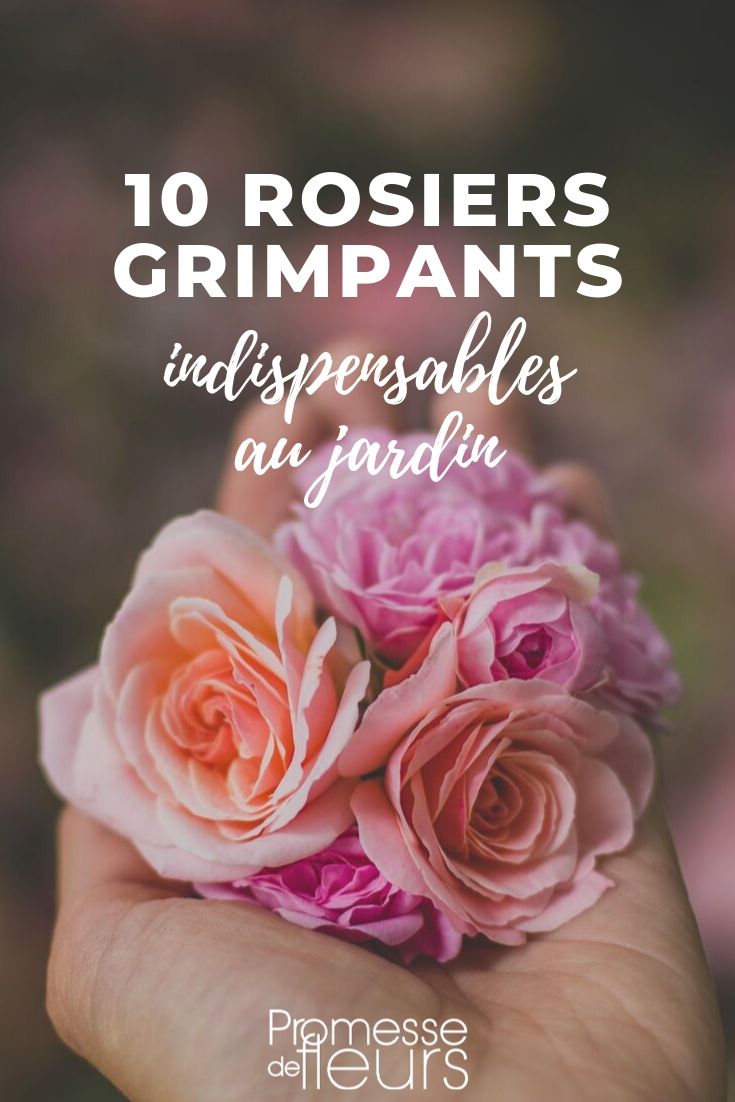































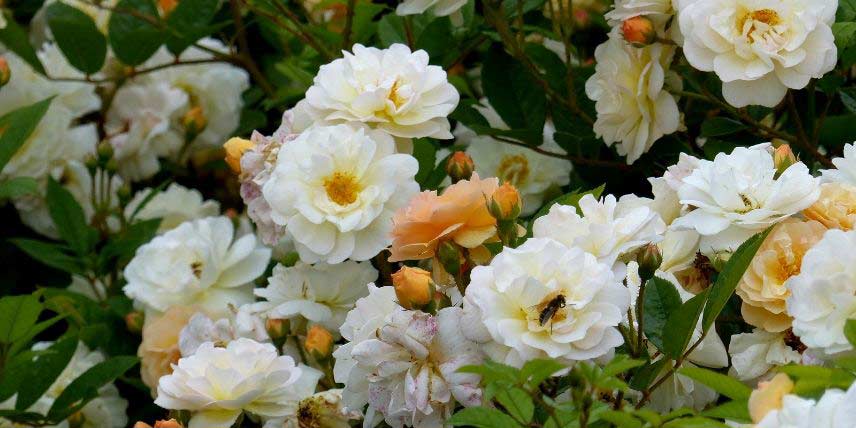
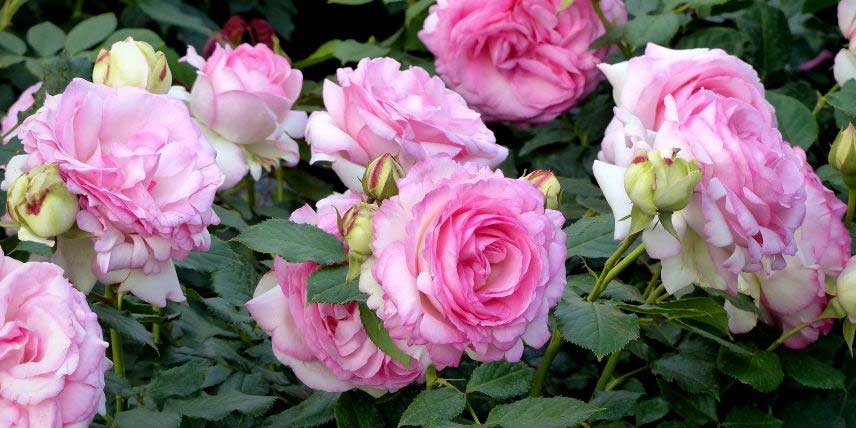
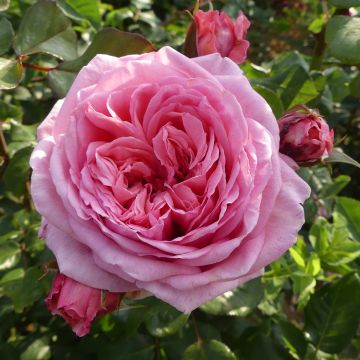
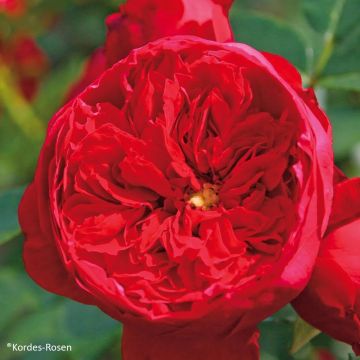
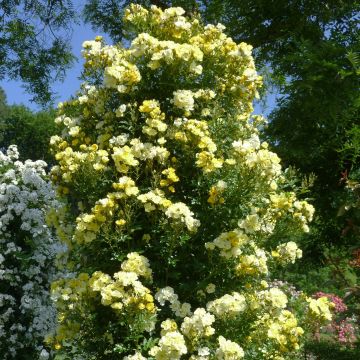
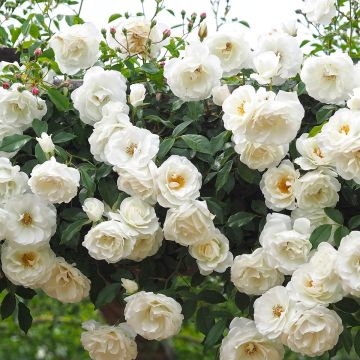
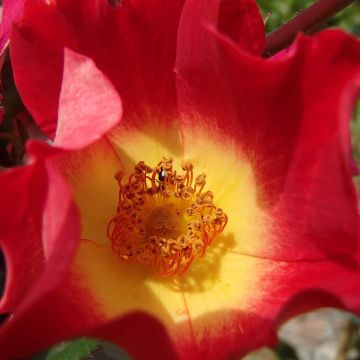
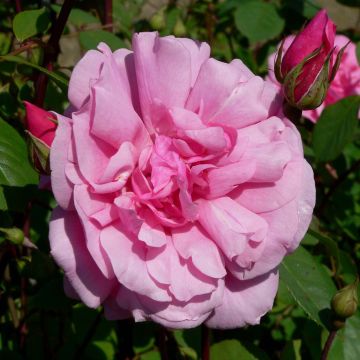
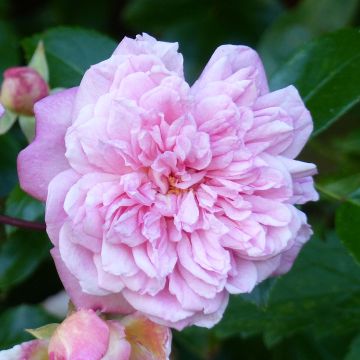
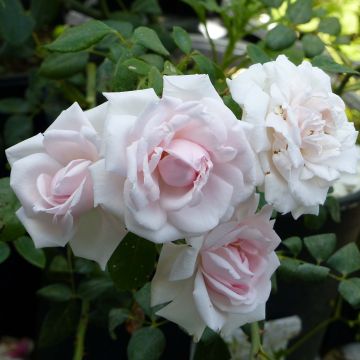
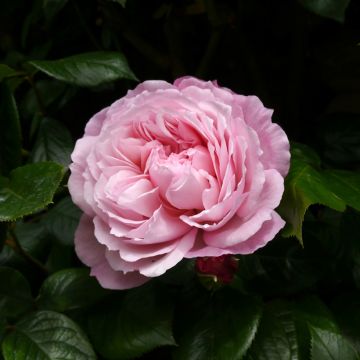
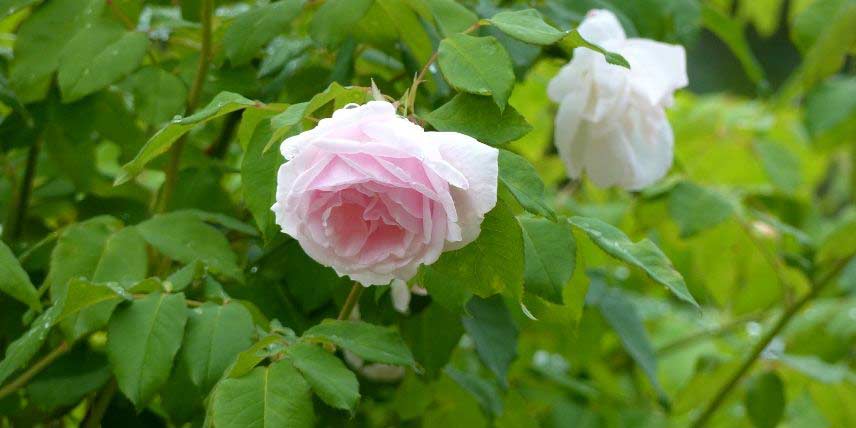
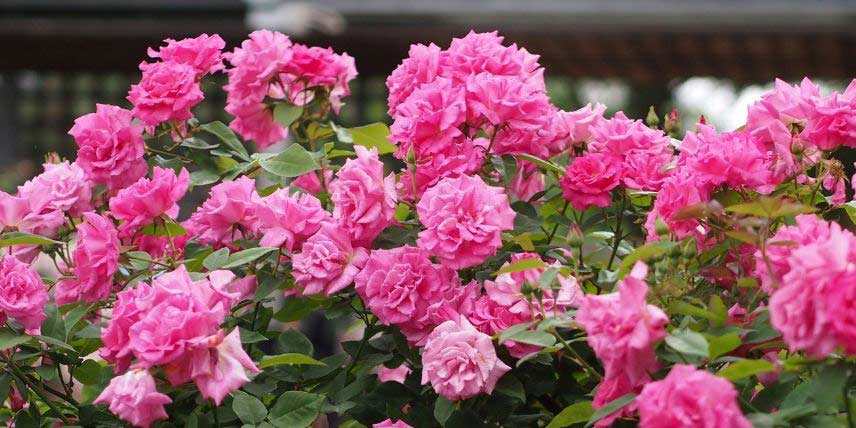
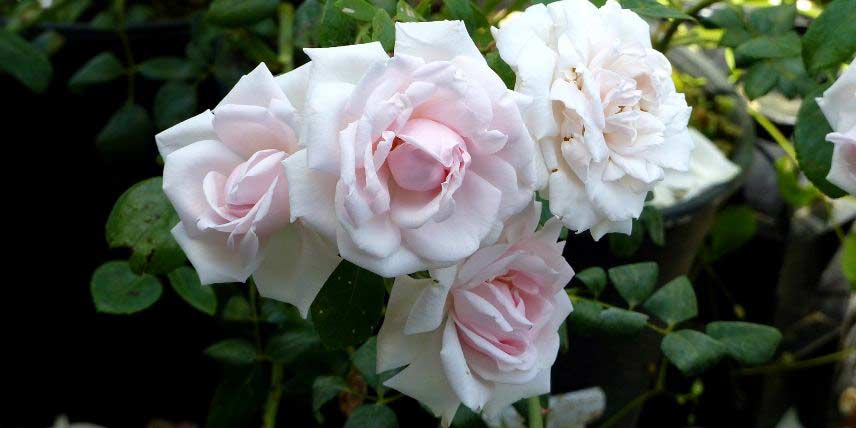
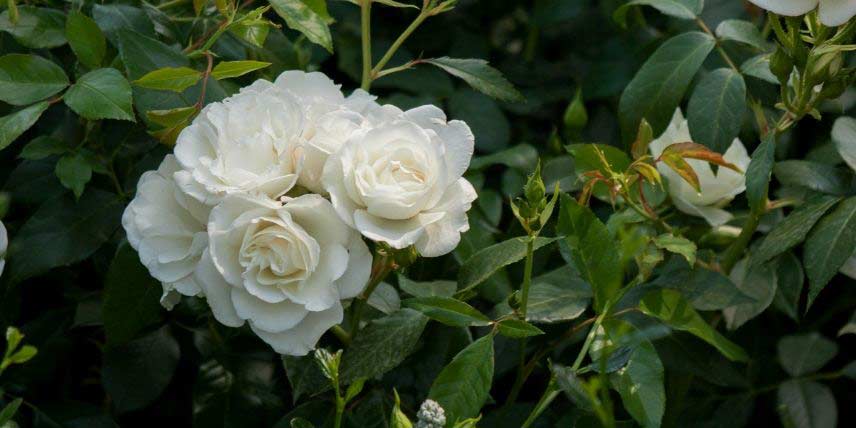
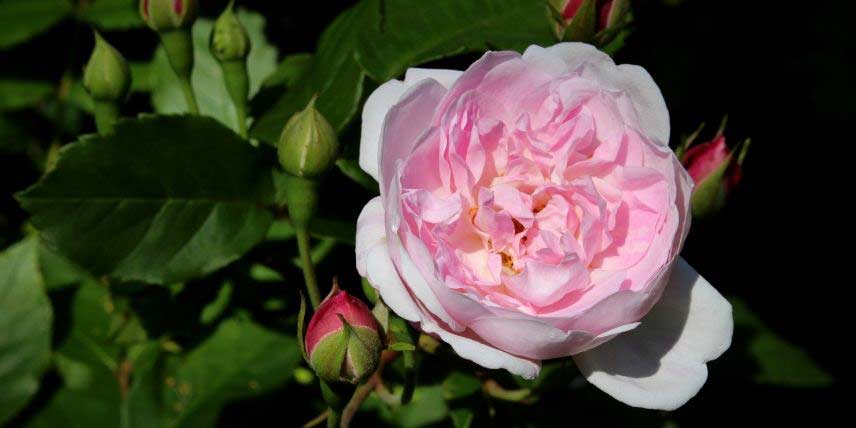
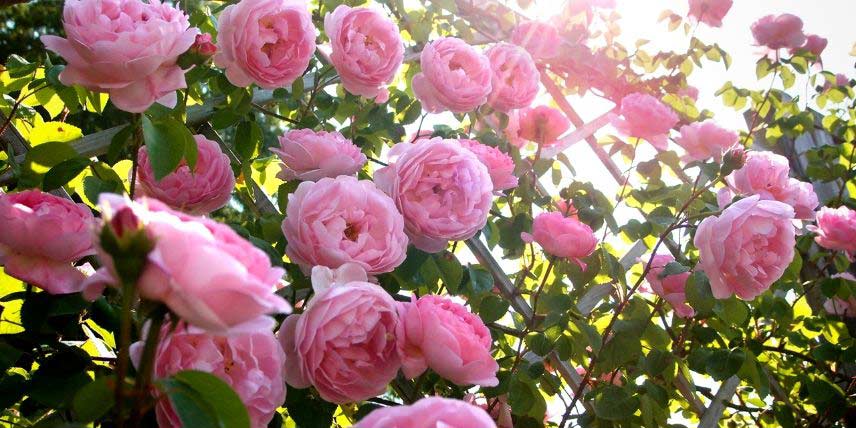
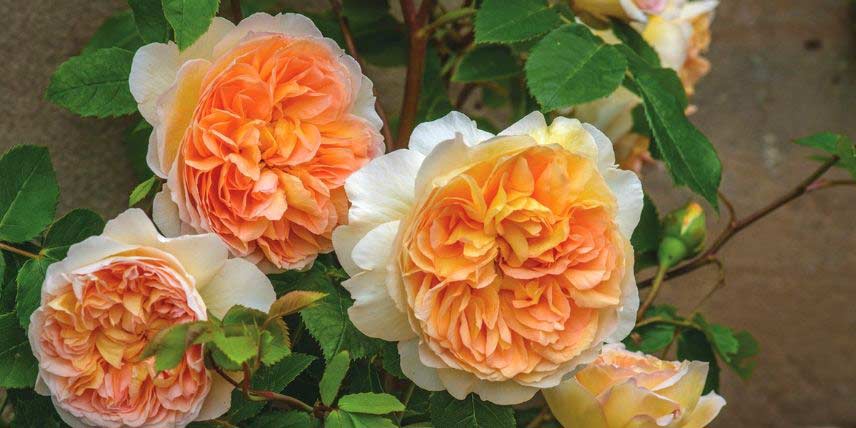
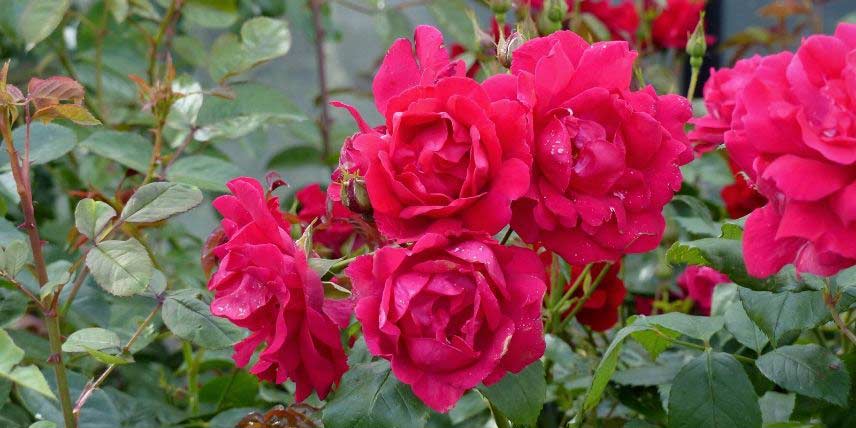
Comments